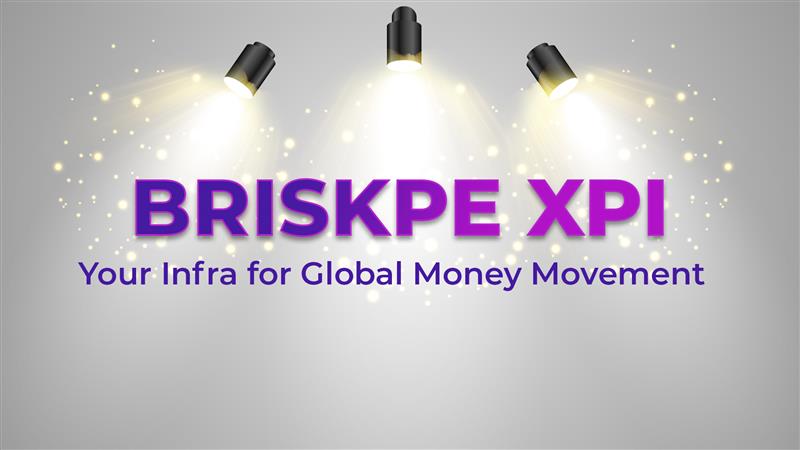The Next Frontier in Cross-Border Payments
Domestic payments in India have undergone a revolution. UPI, RuPay, and other NPCI-led innovations have transformed the country into a global benchmark for efficiency and inclusion. The world looks to India’s payment infrastructure as a case study in innovation.
But when it comes to cross-border payments, the reality is very different. Moving money across borders remains slow, opaque, and compliance heavy. Exporters, banks, and fintech’s all struggle with hidden fees, delayed settlements, and regulatory uncertainty.
The challenge isn’t about one broken link in the chain, it’s about the absence of a modern global payments backbone that unites speed and compliance.
This is where the conversation around the future of India’s cross-border payment infrastructure must begin.
A Quick History: Banking Infrastructure and Technology in India
India’s cross-border payments evolved alongside the broader banking infrastructure, shaped by both domestic IT players and global tech.
1. Legacy Banking Era:
For decades, Indian banks relied on manual processes and siloed systems, with cross-border payments handled via SWIFT and multiple intermediaries. Settlements were slow (often 7–10 days), opaque, and costly.
2. IT-Led Modernization:
From the 1980s onward, IT companies like Infosys, TCS, and HCL revolutionized banking:
- Core Banking Solutions (CBS): Centralized branch operations and automated ledgers.
- Payment Automation: NEFT, RTGS, and electronic fund transfers streamlined domestic and international flows.
- Data Analytics & Reporting: Improved transaction monitoring, risk assessment, and regulatory compliance.
3. Global Tech Influence (Microsoft & Others):
Companies like Microsoft contributed to India’s banking modernization:
- Server & Cloud Infrastructure: Windows Server and Azure enabled scalable banking platforms.
- Integration Tools: Microsoft BizTalk allowed legacy systems to connect with emerging fintech solutions.
- Analytics & Business Intelligence: SQL Server and Power BI improved reporting and compliance monitoring.
4. The Digital Leap (UPI & Beyond):
Domestic payments underwent a revolution with UPI, RuPay, and IMPS, enabling real-time, inclusive, and interoperable payments. However, cross-border flows lagged, exposing exporters to delays, hidden fees, and compliance burdens.
This evolution set the stage for modern cross-border payment solutions that combine speed, compliance, and exporter-centric design.
From Banks to Exporter-Centric Infrastructure
India’s cross-border payments have evolved through three eras:
1. Cross-Border 1.0 – The Bank Era:
Banks were the sole custodians of international trade. Payments traveled through SWIFT and intermediary banks, often taking 7–10 days, with little visibility and high costs.
2. Cross-Border 2.0 – Fintech & Marketplace Innovation:
Digital payment gateways (PayPal, PayU, Stripe) and marketplace-driven solutions (Payoneer) offered faster settlements, but many ignored Indian regulations, leaving exporters exposed.
3. Cross-Border 3.0 – The BRISKPE Era:
The pandemic accelerated global trade, but foreign platforms could not meet India’s compliance requirements. BRISKPE was conceived to reimagine cross-border payments, combining speed, transparency, and regulatory alignment.
The Two Ends of a Broken Spectrum
Today’s global ecosystem sits at two extremes:
1. Fintech-Led Speed, but Fragile Compliance
- Fintech’s innovate fast, but most skip deep compliance.
- FEMA rules, PACB norms, and RBI guidelines are often treated as afterthoughts.
- Exporters get speed but face long-term risks if payments are misaligned with regulation.
2. Bank-Led Compliance, but Legacy Technology
- Banks remain custodians of trust, but rely on legacy systems built decades ago by Infosys, TCS, or HCL.
- Modernizing these systems requires huge investments and multi-year timelines.
- Global banks often see India as a small market and hesitate to re-engineer their systems for its unique regulatory framework.
In other words: fintechs are fast but fragile; banks are compliant but slow.
Neither approach is enough for India’s exporters.
What the Future of Global Payment Infrastructure Should Look Like
If we want to unlock the next era of global trade, we must ask: “What should modern cross-border payment infrastructure look like?”
It must be:
- Compliance-First by Design
Regulations like FEMA, PACB, and DPDP cannot be bolted on later. Compliance must be embedded into the infrastructure itself. - Scalable Across Geographies
Whether a Tier-2 Indian bank or a global financial institution in Singapore, both should plug into the same rails without costly re-engineering. - Technology + Licensing Combined
Infra players must hold their own licenses, own merchant KYC, and ensure full compliance flows. Resellers or referral models aren’t enough.
This isn’t an upgrade, it’s a complete reimagination of what cross-border payment infrastructure in India should be.
Enter BRISKPE XPI: India’s Blueprint for the Future
This is the vision behind BRISKPE XPI a modular, compliance-first global payments infrastructure built in India for the world.
Unlike referral-based models, BRISKPE XPI is not just a dashboard or a pass-through system. It is the invisible backbone that combines licensing, technology, and compliance into a single deployable framework.
Key Differentiators:
- Licensed & Regulated in India: Full alignment with RBI, FEMA, PACB, and DPDP.
- Deployable Infrastructure: Banks, PSPs, and aggregators can integrate infra directly, not just sit on top of it.
- Speed to Market: Banks that take 2 years to modernize can launch in under 6 months. Fintech’s and enablers can integrate in days.
- Exporter-Centric: Every flow is designed for Indian exporters’ needs, ensuring payments are fast, transparent, and compliant.
With BRISKPE XPI, cross-border payments move from being a fragmented process to a seamless global experience with compliance built in.
Solving for Three Ecosystem Players
The cross-border ecosystem involves multiple stakeholders. BRISKPE XPI is designed to solve for all of them:
- Enablers (Non-payment players)
- SaaS platforms, logistics providers, and B2B marketplaces all need payment rails.
- With XPI, they get instant compliance and licensing without rebuilding infra.
- Payment Gateways
- Domestic PGs have solved India’s payment flows, but global expansion is difficult.
- XPI lets them extend globally with compliant infrastructure.
- Banks
- Legacy systems make modernization painful.
- With BRISKPE XPI, banks can leapfrog to a modern infra layer in months, not years, while competing with fintech’s on speed.
Why BRISKPE Stands Apart
- KYC Ownership: Unlike resellers, BRISKPE owns merchant KYC and compliance obligations.
- Faster Deployment: 2 years shrink to 6 months for banks, days for fintech’s.
- Policy-Aligned: Built for PACB, FEMA, and DPDP compliance from day one.
- India-First, Global-Ready: Not a foreign model tweaked for India but infra built in India to scale globally.
This positions BRISKPE as not just another player, but the thought leader shaping the future of India’s payment infrastructure.
Why Exporters Benefit Most
Exporters sit at the heart of this story. For them, payments are not abstract infrastructure they are working capital, contracts, and survival.
With BRISKPE XPI:
- No more delays due to compliance gaps.
- No hidden charges or ambiguous flows.
- FEMA-compliant by design.
- Transparent pricing with compliance bundled in.
Exporters get the best of both worlds: speed with certainty.
Policy Alignment and Trust
India’s regulatory ecosystem is evolving quickly:
- PACB Guidelines ensure clarity for cross-border aggregators.
- DPDP safeguards data, making overseas infra abuse unacceptable.
- FEMA continues to guide every international flow.
Yet many foreign players bypass these frameworks, leaving Indian exporters at risk. By embedding policy alignment directly into infra, BRISKPE XPI becomes the safest bet for exporters, banks, and fintech’s alike.
The Bigger Picture: Cross-Border Payments 3.0
The domestic revolution has already happened with UPI. Now, the world needs a similar leap in cross-border payments.
- For fintech’s, XPI is the compliance backbone.
- For banks, it’s a leap to modernization.
- For exporters, it’s speed and certainty.
- For regulators, it’s a trusted, policy-aligned framework.
This is Cross-Border Payments 3.0: not faster dashboards, but a new payment infrastructure standard designed in India, for global trade.
BRISKPE XPI and the Future of India’s Payment Infrastructure
Cross-border payments are no longer just about transactions, they are about trust, policy, and infrastructure.
Banks cannot carry the weight alone. Fintech’s cannot bypass compliance forever. Regulators cannot chase infra that was never built for them.
The ecosystem needs a new standard for global payments, and BRISKPE XPI is that blueprint:
- India-first, globally scalable.
- Compliance-embedded, not compliance-burdened.
- Faster to deploy, built to last.
Cross-border payments will define the future of trade. India’s exporters need an infrastructure that matches their ambition. BRISKPE XPI is that infrastructure.





